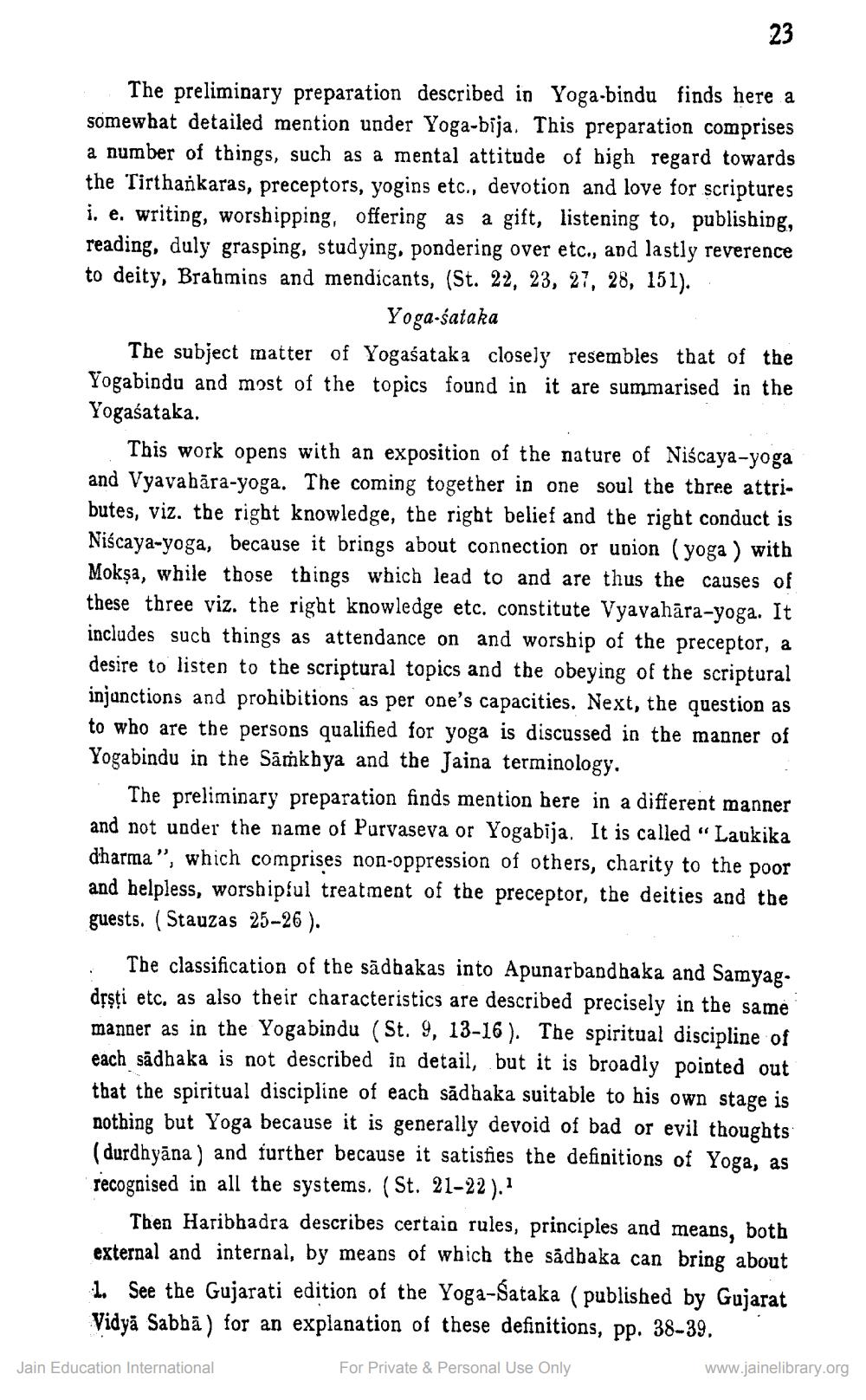________________
The preliminary preparation described in Yoga-bindu finds here a somewhat detailed mention under Yoga-bija. This preparation comprises a number of things, such as a mental attitude of high regard towards the Tirthankaras, preceptors, yogins etc., devotion and love for scriptures i. e. writing, worshipping, offering as a gift, listening to, publishing, reading, duly grasping, studying, pondering over etc., and lastly reverence to deity, Brahmins and mendicants, (St. 22, 23, 27, 28, 151).
Yoga.śataka The subject matter of Yogaśataka closely resembles that of the Yogabindu and most of the topics found in it are summarised in the Yogaśataka.
This work opens with an exposition of the nature of Niścaya-yoga and Vyavahāra-yoga. The coming together in one soul the three attributes, viz. the right knowledge, the right belief and the right conduct is Niscaya-yoga, because it brings about connection or usion (yoga ) with Mokșa, while those things which lead to and are thus the causes of these three viz. the right knowledge etc. constitute Vyavahāra-yoga. It includes such things as attendance on and worship of the preceptor, a desire to listen to the scriptural topics and the obeying of the scriptural injunctions and prohibitions as per one's capacities. Next, the question as to who are the persons qualified for yoga is discussed in the manner of Yogabindu in the Sāmkhya and the Jaina terminology,
The preliminary preparation finds mention bere in a different manner and not under the name of Purvaseva or Yogabija. It is called "Laukika dharma", which comprises non-oppression of others, charity to the poor and helpless, worshipful treatment of the preceptor, the deities and the guests. (Stauzas 25–26 ). : The classification of the sādbakas into Apunarbandhaka and Samyag. dịşți etc. as also their characteristics are described precisely in the same manner as in the Yogabindu (St. 9, 13-16). The spiritual discipline of each sädhaka is not described in detail, but it is broadly pointed out that the spiritual discipline of each sãdhaka suitable to his own stage is nothing but Yoga because it is generally devoid of bad or evil thoughts (durdhyāna) and further because it satisfies the definitions of Yoga, as recognised in all the systems. (St. 21-22 ).)
Then Haribhadra describes certain rules, principles and means, both external and internal, by means of which the sådbaka can bring about 1. See the Gujarati edition of the Yoga-Sataka ( published by Gujarat
Vidya Sabbā) for an explanation of these definitions, pp. 38-39. Jain Education International For Private & Personal Use Only
www.jainelibrary.org




